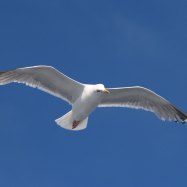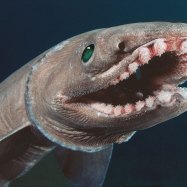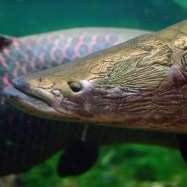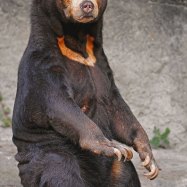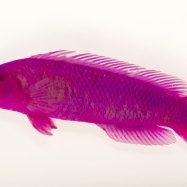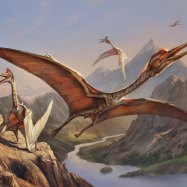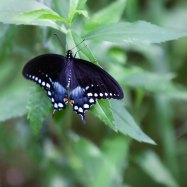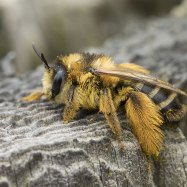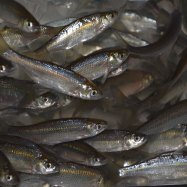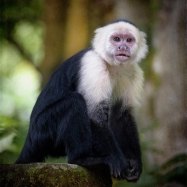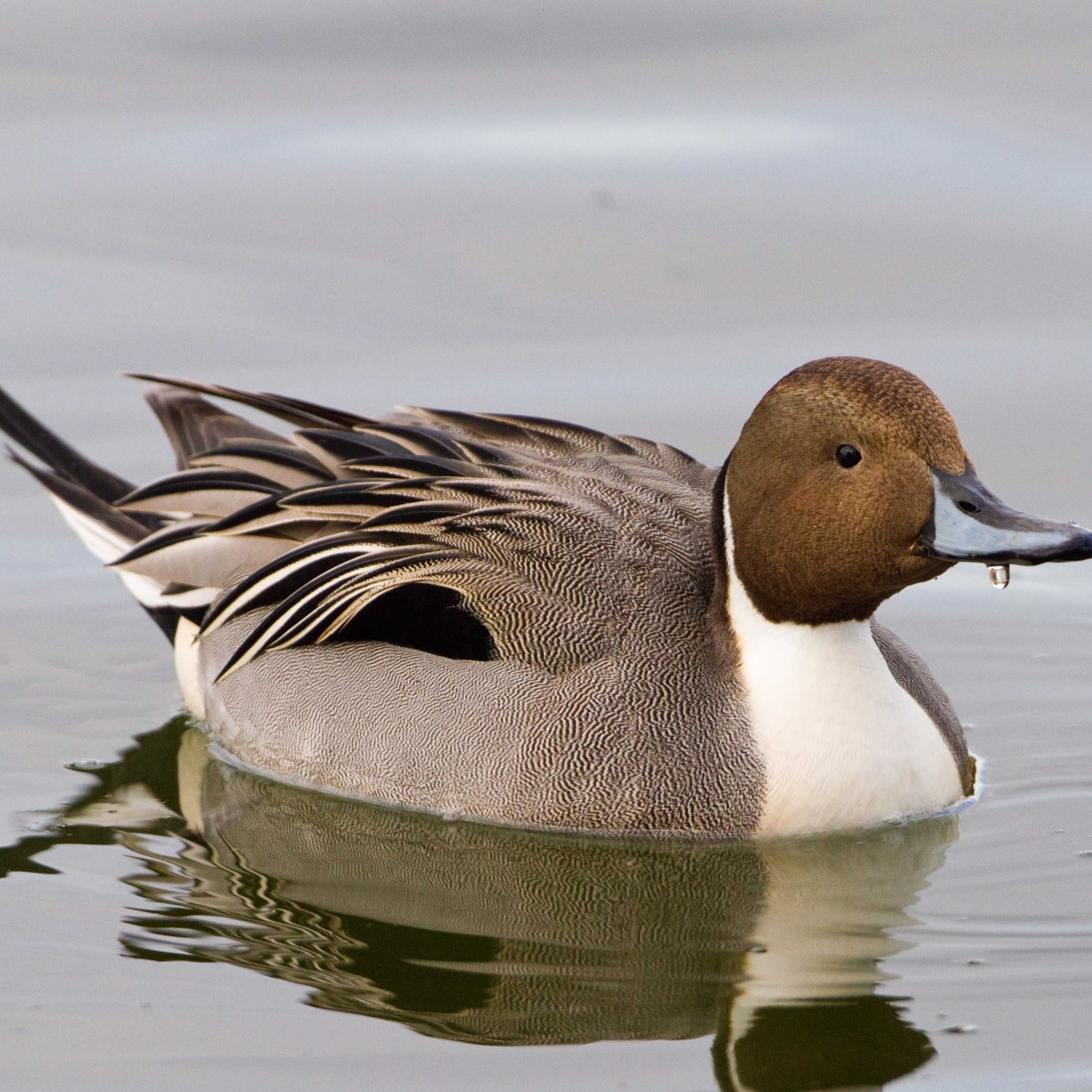
Northern Pintail
51 - 76 cm
The Northern Pintail is a sleek and graceful bird, found in the Northern Hemisphere. With a slender body shape and a length of 51-76 cm, it belongs to the Anatidae family. This gorgeous bird is known for its elegant appearance and migratory nature, making it a delight for birdwatchers. Keep an eye out for this stunning creature on your next outdoor adventure. #NorthernPintail #Birdwatching #Anatidae
Animal Details Summary:
Common Name: Northern Pintail
Kingdom: Animalia
Habitat: Wetlands, marshes, lakes, ponds
The Dazzling Northern Pintail: Exploring the Fascinating World of an Avid Migrator
As the cold winds of the northern hemisphere start to blow, a magnificent bird can be seen gliding across the sky, with its long and slender silhouette. This elegant creature is none other than the Northern Pintail, a remarkable bird that is found in various parts of the world, including North America, Europe, and Asia.Scientifically known as Anas acuta, the Northern Pintail belongs to the animal kingdom, Chordata phylum, and Aves class. This bird belongs to the Anseriformes order and the Anatidae family, which includes ducks, geese, and swans Northern Pintail. With its distinctive long, pointed tail, this bird has earned the common name of "Northern Pintail."
Wetlands, marshes, lakes, and ponds are the preferred habitats of these birds, where they can forage for food and build their nests. These stunning creatures can be observed in the United States, where they are native birds. However, their migration pattern takes them to various parts of the world, making them a true globetrotter.
A Herbivorous Diet: What Northern Pintails Love to Eat
One of the most fascinating features of Northern Pintails is their feeding method, which is herbivorous. These birds have a diet that consists of various plant materials such as seeds, stems, and leaves, found in their wetland habitats. They also consume small aquatic animals such as insects, mollusks, and crustaceans found in the water bodies.Unlike some other bird species, Northern Pintails do not feed by diving underwater. Instead, they prefer to dabble on the surface for food, stretching their long necks to reach their prey Nova Scotia Duck Tolling Retriever. Apart from their herbivorous diet, these birds are also known for their unique feeding behavior, where they use their bills to filter water and strain out small organisms for consumption.
Global Distribution: The Journeys of a Northern Pintail
With their incredible ability to migrate, Northern Pintails have a vast geographical distribution, covering North America, Europe, and Asia. These birds are found in the United States, their country of origin, during breeding season, and then migrate to various regions in the northern hemisphere for the winter.In North America, these birds can be found in the northern parts of the continent, including Alaska and Canada. In Europe, they are seen in countries like Sweden, Finland, Germany, and Russia. And in Asia, they can be observed in China, Japan, and Korea. Their migration patterns vary based on their location, but one thing is for sure - they are avid travelers, going as far as Africa and Australia during the non-breeding season.
The Beauty of the Northern Pintail: A Closer Look at Their Appearance
Northern Pintails are easily recognizable by their distinct appearance. Male Northern Pintails have a brown head and white neck with a long, slender, black and white striped tail. The unique tail of the male is a defining feature of the species, which can be up to 35 cm long, almost double the body length of the bird.On the other hand, female Northern Pintails have a mottled brown body, which helps them camouflage while nesting. This feature makes them less noticeable to predators while they are vulnerable and taking care of their eggs. The females also have a shorter tail, which is not as pronounced as the male's.
The Graceful Body Shape: Adapted for Life in the Wetlands
The Northern Pintail is an elegant bird with a slim and elongated body, perfectly adapted for its life in wetland habitats. With their pointed tails and long necks, these birds have a graceful appearance that makes them stand out in a flock of other birds.Their sleek body shape helps them navigate through the water with ease and speed while also enabling them to gracefully soar through the sky. These features also contribute to their efficient foraging and hunting abilities, making them successful herbivores and avid migrators.
The Demanding Courtship Rituals of the Northern Pintail
During the breeding season, male Northern Pintails engage in elaborate courtship rituals to attract a mate. They start by making distinctive calls and displaying their unique tails, making them look even more striking. The males also perform courtship dances, where they bob their heads, flap their wings, and even leap in the air to impress the females. These special rituals are a beautiful sight to behold and play a crucial role in the reproduction and survival of the species.The Threats Faced by Northern Pintails and Conservation Efforts
Like many other bird species, Northern Pintails are facing various threats to their survival. One major threat they face is habitat loss, as wetlands are drained for human development. These birds also face challenges such as hunting, predation, and climate change. Consequently, their population has declined in recent decades, leading to conservation efforts to protect and preserve these graceful creatures.To help protect the Northern Pintails, various organizations are working towards restoring and preserving their wetland habitats, reducing hunting and introducing regulations to protect the birds. Conservationists also use tracking methods to monitor the migration patterns of these birds, gain valuable information, and understand how human activities are impacting their population.
Conclusion: A Fascinating Species That Captures the Hearts of Bird Lovers
As we have seen, the Northern Pintail is a remarkable bird that truly captures the imagination. From their elegant appearance to their impressive migration patterns, these birds are a true wonder of nature. With the threats they face, it is more important than ever to spread awareness about their conservation and appreciate the beauty of these avid migrators.Whether you are an avid bird watcher or just someone who appreciates the wonders of nature, the Northern Pintail is a species that deserves our attention. Let us work together towards preserving and protecting these stunning birds, ensuring that they continue to grace our skies for generations to come. So, keep an eye on the sky during migration season, and you may just spot a magnificent Northern Pintail, gracefully making its way across the globe.

Northern Pintail
Animal Details Northern Pintail - Scientific Name: Anas acuta
- Category: Animals N
- Scientific Name: Anas acuta
- Common Name: Northern Pintail
- Kingdom: Animalia
- Phylum: Chordata
- Class: Aves
- Order: Anseriformes
- Family: Anatidae
- Habitat: Wetlands, marshes, lakes, ponds
- Feeding Method: Herbivorous
- Geographical Distribution: North America, Europe, Asia
- Country of Origin: United States
- Location: Northern Hemisphere
- Animal Coloration: Males have a brown head and white neck with a distinctive long, black and white striped tail. Females have a mottled brown body
- Body Shape: Slim and elongated
- Length: 51 - 76 cm
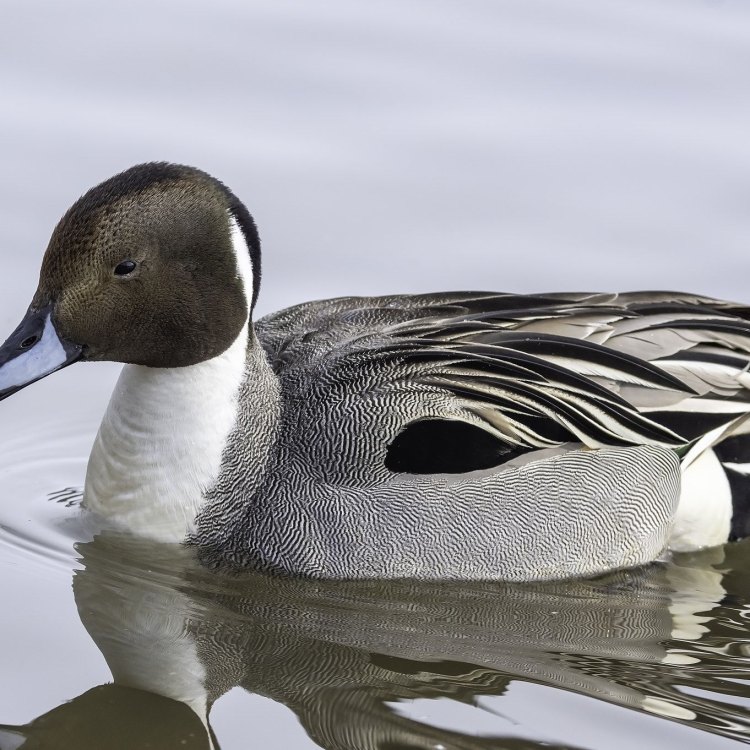
Northern Pintail
- Adult Size: Large
- Average Lifespan: Up to 10 years
- Reproduction: Sexual
- Reproductive Behavior: Mate in pairs or small groups
- Sound or Call: Males produce a whistling call
- Migration Pattern: Long-distance migrant
- Social Groups: Breeding pairs and small groups
- Behavior: Highly adaptable and agile in flight
- Threats: Habitat loss, hunting
- Conservation Status: Least Concern
- Impact on Ecosystem: Seed dispersal through feeding and excretion
- Human Use: Hunting game bird, bird-watching
- Distinctive Features: Long and slender neck, distinctive long, black and white striped tail in males
- Interesting Facts: One of the most widespread and abundant duck species in the world
- Predator: Large birds of prey, mammals
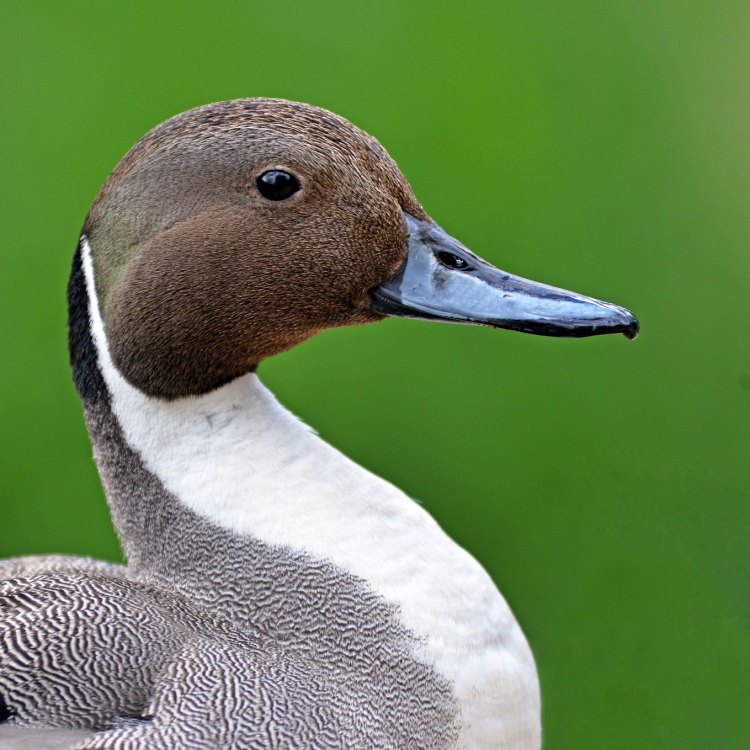
Anas acuta
The Fascinating Northern Pintail: A Highly Adaptable and Agile Waterbird
The Northern Pintail, also known as the Anas acuta, is a large waterbird that belongs to the Anatidae family. It is commonly found in North America, Eurasia, and parts of Africa and can be easily recognized by its distinctive long and slender neck, as well as its long, black and white striped tail in males. These graceful birds are known for their incredible agility and adaptability, making them one of the most fascinating and widespread duck species in the world.Despite being classified as a species of Least Concern on the conservation status scale, Northern Pintails are still facing numerous threats that could potentially impact their numbers in the future PeaceOfAnimals.Com. From habitat loss to hunting, these birds have to face various challenges to ensure their survival.
In this article, we will explore the unique features and behaviors of Northern Pintails, their impact on the ecosystem, and their coexistence with humans.
Size and Lifespan
On average, Northern Pintails have a body length of 51-64 cm and a wingspan of 68-85 cm. They are considered one of the largest ducks, with males being slightly bigger than females. Male Northern Pintails weigh around 750-1000 grams, while females have an average weight of 600-850 grams.
In terms of lifespan, Northern Pintails can live up to 10 years in the wild if they are lucky enough to survive the various threats they face. However, the average lifespan of these birds is usually shorter, around 4-5 years.
Reproduction and Behavior
Northern Pintails are sexual reproducers, and they mate in pairs or small groups during breeding season, which occurs between April and June. During this time, males will put on a spectacular courtship display to attract females Nyala. They will swim in circles and wave their heads up and down while producing a distinctive whistling call that can be heard from a distance.
Once a breeding pair is formed, the female will lay around 6-10 eggs in a hidden nest on the ground, usually near water. Incubation takes around 22-24 days, mainly done by the female, while the male guards the nest and feeds the female. After the eggs hatch, the young ducklings will be led by their parents to nearby water bodies, where they will learn to swim and forage for food.
Northern Pintails are highly adaptable and agile in flight, making them excellent at avoiding predators and navigating through different habitats. They are known for their aerodynamic bodies, allowing them to fly at impressive speeds of up to 80km/h.
Migration Patterns and Social Groups
Northern Pintails are long-distance migrants, with some populations traveling up to 10,000 km during their annual journey. They mainly breed in the northern parts of the Northern Hemisphere and migrate to warmer regions in the south during the winter months. This pattern helps them find better foraging and breeding opportunities, as well as avoiding harsh winter conditions.
These waterbirds are social creatures and can be found in breeding pairs or small groups. However, during migration, they may form larger flocks of up to 200 individuals. Northern Pintails have strong pair bonds, and breeding pairs will often stay together even during the migration period.
Threats and Conservation Status
Despite being widespread and abundant, Northern Pintails are still facing numerous threats that could potentially impact their numbers in the future. Habitat loss is one of the main threats these birds face. Wetland destruction and degradation due to human activities such as agriculture, urbanization, and oil and gas development, have greatly reduced the availability of suitable habitats for these birds.
Hunting is another significant threat to Northern Pintails, as they are a popular game bird among hunters. Even though there are regulations in place to control hunting, illegal and unsustainable practices still exist, putting additional pressure on these birds' populations.
Fortunately, the species' conservation status is currently classified as Least Concern on the IUCN Red List. However, it is crucial to continue monitoring and protecting their habitats to ensure a stable population.
Impact on Ecosystem
As with any species, Northern Pintails play a vital role in their ecosystem. Being omnivores, they feed on a variety of plant matter, invertebrates, and small fish. This diverse diet allows them to contribute to the dispersal of seeds through their feeding and excretion, promoting plant growth and maintaining a healthy balance in wetland ecosystems.
They also provide a food source for large birds of prey and mammals, making them essential in maintaining a balanced predator-prey relationship in their habitats.
Human Use and Interesting Facts
Northern Pintails have been hunted for centuries for their meat, feathers, and eggs. They are still considered a game bird in many regions, and regulated hunting is allowed in some areas during specific seasons. Apart from hunting, these birds are also popular among bird-watchers and are a favorite subject for wildlife photographers due to their graceful appearance and courtship display.
Some interesting facts about Northern Pintails include their distinctive whistling call produced by males, which can be heard up to a mile away. They are also one of the most widespread and abundant duck species in the world, with populations found in various regions from North America to Eurasia and parts of Africa.
Predators
Like all animals, Northern Pintails also have natural predators. Their eggs and young ducklings are vulnerable to predation by large birds of prey such as hawks, falcons, and owls, as well as mammals like foxes, raccoons, and minks. However, adult birds can defend themselves by flying away or diving into the water.
In conclusion
The Northern Pintail is truly a fascinating species with its unique physical features, impressive behaviors, and important role in maintaining a healthy ecosystem. However, like many other animals, its survival is threatened by human activities. It is essential to continue raising awareness and taking action to protect these beautiful birds and their habitats for future generations to admire and appreciate. With proper conservation efforts, we can ensure that Northern Pintails will continue to grace us with their presence for many years to come. So, we must take responsibility for their protection and help them thrive in their natural habitats.
On average, Northern Pintails have a body length of 51-64 cm and a wingspan of 68-85 cm. They are considered one of the largest ducks, with males being slightly bigger than females. Male Northern Pintails weigh around 750-1000 grams, while females have an average weight of 600-850 grams.
In terms of lifespan, Northern Pintails can live up to 10 years in the wild if they are lucky enough to survive the various threats they face. However, the average lifespan of these birds is usually shorter, around 4-5 years.
Reproduction and Behavior
Northern Pintails are sexual reproducers, and they mate in pairs or small groups during breeding season, which occurs between April and June. During this time, males will put on a spectacular courtship display to attract females Nyala. They will swim in circles and wave their heads up and down while producing a distinctive whistling call that can be heard from a distance.Once a breeding pair is formed, the female will lay around 6-10 eggs in a hidden nest on the ground, usually near water. Incubation takes around 22-24 days, mainly done by the female, while the male guards the nest and feeds the female. After the eggs hatch, the young ducklings will be led by their parents to nearby water bodies, where they will learn to swim and forage for food.
Northern Pintails are highly adaptable and agile in flight, making them excellent at avoiding predators and navigating through different habitats. They are known for their aerodynamic bodies, allowing them to fly at impressive speeds of up to 80km/h.
Migration Patterns and Social Groups
Northern Pintails are long-distance migrants, with some populations traveling up to 10,000 km during their annual journey. They mainly breed in the northern parts of the Northern Hemisphere and migrate to warmer regions in the south during the winter months. This pattern helps them find better foraging and breeding opportunities, as well as avoiding harsh winter conditions.These waterbirds are social creatures and can be found in breeding pairs or small groups. However, during migration, they may form larger flocks of up to 200 individuals. Northern Pintails have strong pair bonds, and breeding pairs will often stay together even during the migration period.
Threats and Conservation Status
Despite being widespread and abundant, Northern Pintails are still facing numerous threats that could potentially impact their numbers in the future. Habitat loss is one of the main threats these birds face. Wetland destruction and degradation due to human activities such as agriculture, urbanization, and oil and gas development, have greatly reduced the availability of suitable habitats for these birds.Hunting is another significant threat to Northern Pintails, as they are a popular game bird among hunters. Even though there are regulations in place to control hunting, illegal and unsustainable practices still exist, putting additional pressure on these birds' populations.
Fortunately, the species' conservation status is currently classified as Least Concern on the IUCN Red List. However, it is crucial to continue monitoring and protecting their habitats to ensure a stable population.
Impact on Ecosystem
As with any species, Northern Pintails play a vital role in their ecosystem. Being omnivores, they feed on a variety of plant matter, invertebrates, and small fish. This diverse diet allows them to contribute to the dispersal of seeds through their feeding and excretion, promoting plant growth and maintaining a healthy balance in wetland ecosystems.They also provide a food source for large birds of prey and mammals, making them essential in maintaining a balanced predator-prey relationship in their habitats.
Human Use and Interesting Facts
Northern Pintails have been hunted for centuries for their meat, feathers, and eggs. They are still considered a game bird in many regions, and regulated hunting is allowed in some areas during specific seasons. Apart from hunting, these birds are also popular among bird-watchers and are a favorite subject for wildlife photographers due to their graceful appearance and courtship display.Some interesting facts about Northern Pintails include their distinctive whistling call produced by males, which can be heard up to a mile away. They are also one of the most widespread and abundant duck species in the world, with populations found in various regions from North America to Eurasia and parts of Africa.
Predators
Like all animals, Northern Pintails also have natural predators. Their eggs and young ducklings are vulnerable to predation by large birds of prey such as hawks, falcons, and owls, as well as mammals like foxes, raccoons, and minks. However, adult birds can defend themselves by flying away or diving into the water.In conclusion
The Northern Pintail is truly a fascinating species with its unique physical features, impressive behaviors, and important role in maintaining a healthy ecosystem. However, like many other animals, its survival is threatened by human activities. It is essential to continue raising awareness and taking action to protect these beautiful birds and their habitats for future generations to admire and appreciate. With proper conservation efforts, we can ensure that Northern Pintails will continue to grace us with their presence for many years to come. So, we must take responsibility for their protection and help them thrive in their natural habitats.
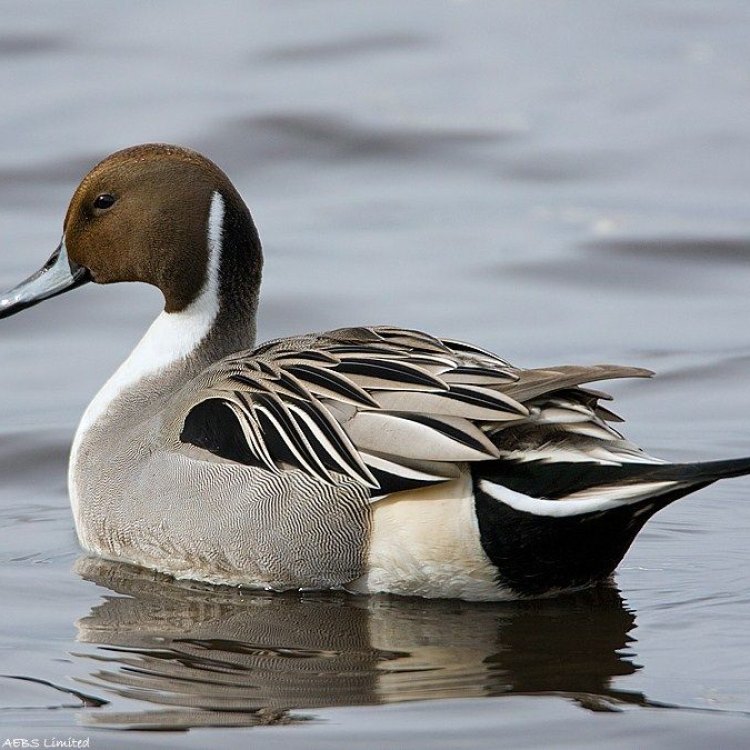
The Dazzling Northern Pintail: Exploring the Fascinating World of an Avid Migrator
Disclaimer: The content provided is for informational purposes only. We cannot guarantee the accuracy of the information on this page 100%. All information provided here may change without prior notice.

